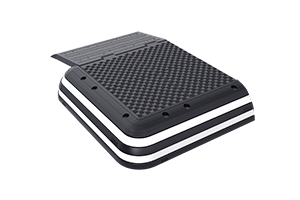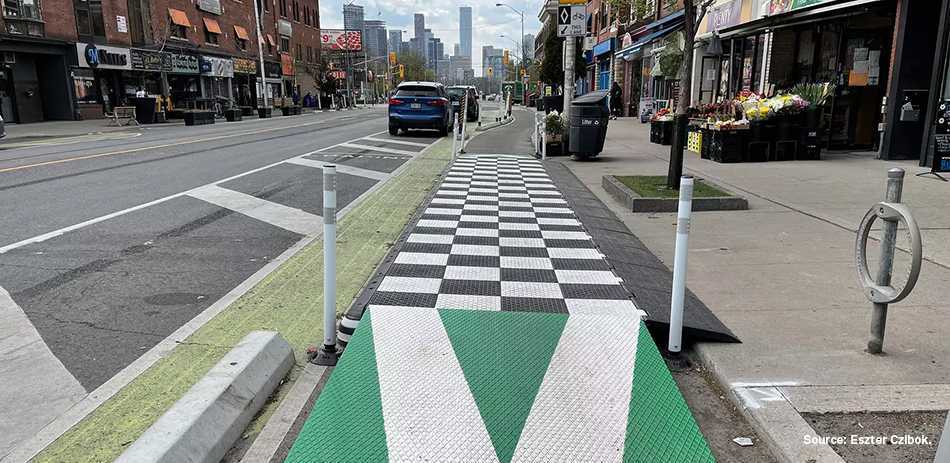| PROJECT NAME: | Active School Travel initiative |
| CITY: | Dun Laoghaire, Ireland |
| LOCATION: | Carysfort Avenue |
| OPENING DATE: | January 2021 |
As part of the Active School Travel initiative launched in August 2020, the Dun Laoghaire City Council implemented a two-way cycle facility on the west side of Carysfort Avenue from its junction with Stillorgan Park Road to Convent Road. Most of the destination points along the road are on its west side– for example, Carysfort National School and Carysfort Park. The two-way bike lane on this side provides a safe and attractive route on the same side of the road where cyclists of all abilities can move up and down the road in this new dedicated facility.
Moreover, since this installation the Council has launched public engagement on three new pilot safe routes to upgrade and connect the existing walking and cycling network in the County. These new consolidated routes, totalling approximately 20 kilometres in length, are aimed at encouraging increased walking and cycling to school, and for wider use by the public.
Need and project objectives.
With the new implementation of the two-way cycle facility on Carysfort Avenue, the latter was coinciding with three bus stops. Then, bus stops have been moved out to the edge of the cycle track generating a conflict between cyclists and pedestrians. The project had to guarantee the coexistence between cyclists and pedestrians who got on and off the buses.
The proposed solution.
Therefore, Dun Laoghaire-Rathdown County Council covered a 51 metres area by installing three Vectorial® system platforms with an integrated cycle lane. These platforms allow both cyclists and bus users to share the same space safely. At the same time, now buses can approximate the stop without the need for manoeuvres, optimizing their travel times and ensuring universal accessibility for all bus users.
These platforms allow both cyclists and bus users to share the same space safely. At the same time, buses can now stop at the stop without the need for manoeuvres, optimizing their travel times and allowing easy access for common passengers and especially those with reduced mobility.
From ZICLA, we have customised the platforms (colour of the surface of the main modules, checkerboard, podotactile surface of the main modules) according to the city’s specifications, in addition to the reflective strips that contain by default the curbs to ensure maximum visibility.





